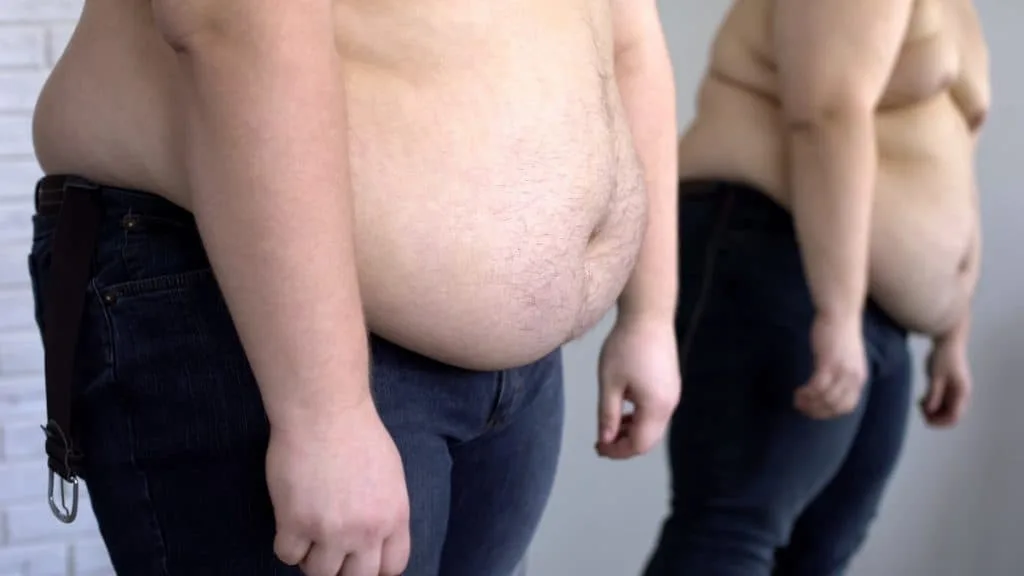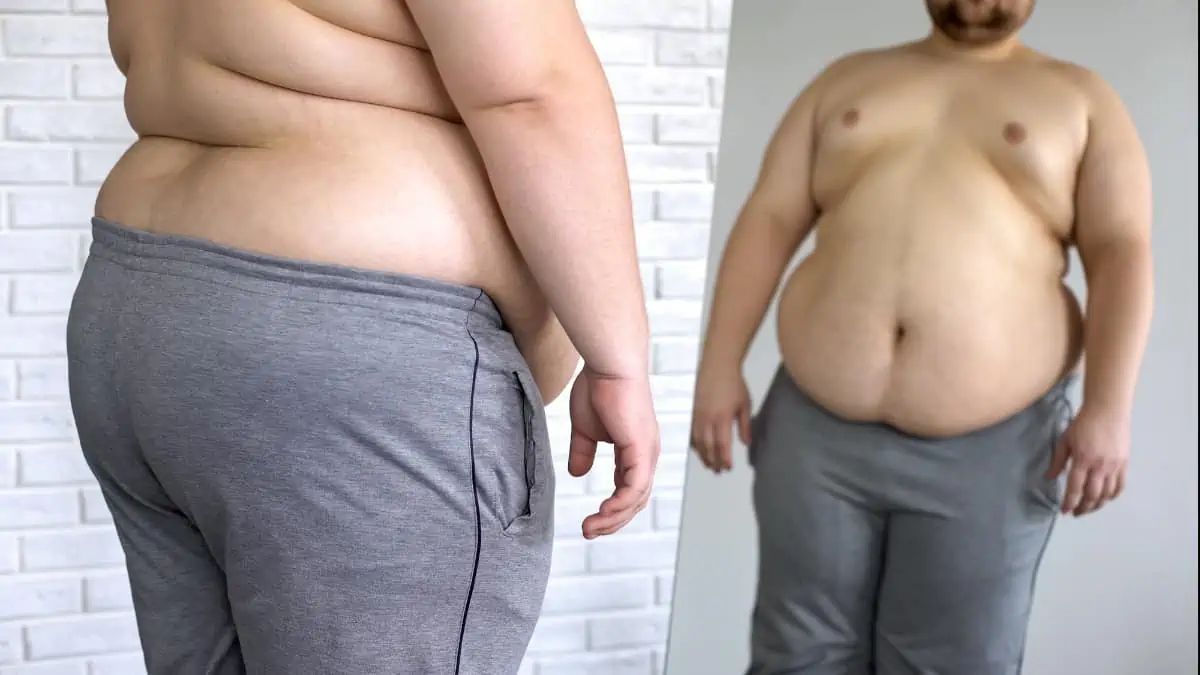Having a 71 inch waist, a 72 inch waist, a 73 inch waist, or a 74 inch waist are all clear indicators of serious obesity. So with this in mind, we’ve evaluated the dangers of having a 72″ waist and then offered some evidence-based suggestions for slimming your stomach and shifting some of your excess body mass.
Related:
What are the dangers of having a 72 inch waist?

It’s well-documented in the scientific literature that obesity is correlated with all-cause mortality and with many chronic illnesses like diabetes, hypertension, and heart disease. [1]
In the short term, having a 72 in waist or a 74 in waist can also be problematic. Indeed, there comes the point when your body is so heavy, and your stomach is so large that they become an actual barrier to losing weight because physical exercise is so difficult.
Having an excessively bulky waistline can also put a lot of pressure on your joints, which often means that stomach-slimming activities like jogging are off the table. Thankfully, simply reducing your calories and generally being that bit more active is usually enough to trigger weight loss.
How about a 74 inch waist?

While a 74 inch waist is obviously a couple of inches bigger than a 72 inch waist, an inch or two here and there hardly makes a difference when your stomach size was already a problem 25 inches ago.
Indeed, research shows that being obese can be particularly dangerous to the physical health of younger people. [2] But that possibility granted, no person of any age can enjoy good health while having a 74″ waist.
The good news is that there are effective ways to shift large amounts of body mass in short periods of time while drastically improving your health and quality of life in the process. More on these methods in a sec.
How can you reduce your 72 inch waist or 74 inch waist?

We often speak about the benefits of moderate and sustainable weight loss over rapid weight loss, especially for those who are only somewhat overweight.
However, when you’re seriously obese, which you are if you have a 72 inch waist, then you’re risking your health every day that you continue to maintain your current body shape.
As such, under the supervision of a doctor, consuming a very low-calorie diet where you eat fewer than 800 calories per day can be a viable strategy for high BMI individuals to lose weight quickly. [3]
When you have more total weight that needs to be lost, you can typically experience faster and more noticeable results—an underappreciated advantage that can give you an initial burst of motivation to continue with your stomach-slimming journey.
If you’re unable to exercise due to your weight or stomach size, then try to go for short walks or just generally aim to be a bit more active in your everyday life. This way, you can increase your calorie burn without putting too much stress on your body.
The verdict: What causes someone to accumulate a 72″ waist?

Many of us live in an environment that’s extremely conducive to weight gain. In many cities, there are fast food outlets on every street corner, and you can often order these fattening meals straight to your door.
Lest we blame modern society for the obesity epidemic, many cities are now well-equipped with fitness facilities and services that can help you to lose weight and get in shape.
Therefore, if you’re able to change your habits and make healthy choices (not that you need to go to a gym), your body will naturally begin to reflect those decisions by getting smaller.
If working out in a gym feels daunting or if it’s too difficult due to your weight, then chair exercise is a great option. Using some dumbbells, you can work many muscles in your upper body while sitting down, which will help you to burn far more calories than you otherwise would while you’re sitting down.
References
- Kuh, D., Hardy, R., Hotopf, M., Lawlor, D. A., Maughan, B., Westendorp, R., Cooper, R., Black, S., & Mishra, G. D. (2009). A Review of Lifetime Risk Factors for Mortality. British Actuarial Journal, 15(S1), 17–64. https://doi.org/10.1017/s135732170000550x
- Kuk, J. L., & Ardern, C. I. (2009). Influence of Age on the Association Between Various Measures of Obesity and All-Cause Mortality. Journal of the American Geriatrics Society, 57(11), 2077–2084. https://doi.org/10.1111/j.1532-5415.2009.02486.x
- NHS website. (2021b, November 25). Very low calorie diets. Nhs.Uk. https://www.nhs.uk/live-well/healthy-weight/managing-your-weight/very-low-calorie-diets/

